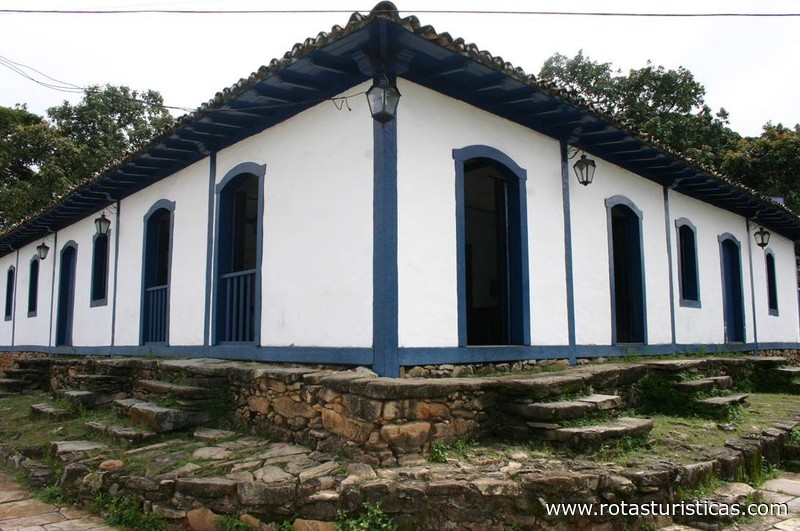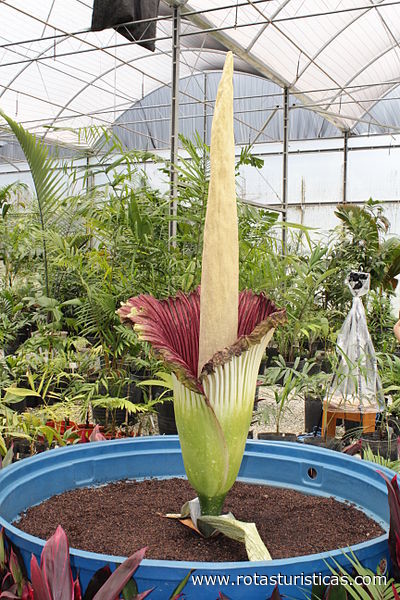Brumadinho, Minas Gerais, Brazil
Suggest Place to Visit
4510
Track to location with GPS |
 |
The Inhotim Institute is home to one of the most important collections of contemporary art in Brazil and considered the largest outdoor art center in Latin America. It is located in Brumadinho (Minas Gerais), a city with 30 thousand inhabitants, just 60 km from Belo Horizonte.
According to the residents of Brumadinho, the site was a farm belonging to a mining company that, in the 19th century, operated in the region and was responsible for an Englishman, named Timothy - "Senhor Tim", who, in the local language, ended up becoming "Nhô Tim" or "Inhô Tim".
It emerged in 2004 to house the collection of Bernardo Paz, a businessman in the mining and steel industry, who was married to Rio de Janeiro artist Adriana Varejão, and 20 years ago began to dispose of his valuable collection of modernist art, which included works by Portinari, Guignard and Di Cavalcanti, to form the collection of contemporary art that is now in Inhotim.
In 2006, the site was opened to the public on regular days without prior appointment. The collection housed works from the 1970s to the present, in eighteen galleries (in 2011). There are 450 works by Brazilian and foreign artists, with emphasis on works by Cildo Meireles, Tunga, Vik Muniz, Hélio Oiticica, Ernesto Neto, Matthew Barney, Doug Aitken, Chris Burden, Yayoi Kusama, Paul McCarthy, Zhang Huan, Valeska Soares, Marcellvs and Rivane Neuenschwander.
The exhibitions are always renewed and galleries are opened annually.5 In 2010, the Institute received 42,000 students and 3,500 teachers.5 In the same year, the number of visits reached 169,289.
The Inhotim Institute is located within the domain of the Atlantic Forest, with enclaves of cerrado on the tops of the mountains. Located at an altitude that varies between 700 m and 1,300 m above sea level, its total area is 786.06 hectares, with a preservation area of 440.16 ha, comprising forest fragments and including a Private Heritage Reserve Natural (RPPN), with 145.37 ha.
The visiting area of Inhotim has 96.87 ha and comprises gardens, galleries, buildings and fragments of forest, in addition to five ornamental lakes, with approximately 3.5 hectares of water mirror. The botanical garden has 4,300 species under cultivation - a mark reached in 2011 - and is surrounded by native forest, with thirty percent of the entire collection on display to the public (about 102 hectares in 2011). In recognition of the need to preserve the 145 hectares of reserve, the institute received from the Ministry of the Environment, in February 2011, the official classification of botanical garden, in category C.8. In this garden, there are about 1,500 species of palm cataloged, the largest collection of its kind in the world.
Corpse flower at Inhotim on December 27, 2012.
In February 2010, the white cube pavilions were replaced by transparent installations. The intention is to promote dialogue with the surrounding mountains and forest. In an article by Fabiano Cypriano for the newspaper Folha de São Paulo, it is mentioned that the changes create more local roots and Inhotim "becomes a new paradigm for the exhibition of contemporary production".
Open from Tuesday to Sunday and on holidays, Inhotim offers themed visits, with monitors, in addition to educational visits for school groups, which must be scheduled in advance. Tuesdays admission is free.
The park is home to several rare plants, both native and exotic.
The Institute is the only place in Latin America that has a specimen of the corpse flower, a species native to Indonesia known as the largest flower in the world. The specimen bloomed for the first time on December 15, 2010, and again on December 27, 2012. The flower is located at Viveiro Educador, in the Equatorial Greenhouse, was exposed to the public, and could be visited by interested and curious people.
In addition to the 170 works of art on display, the museum has 98 benches by designer Hugo França. The first bench was placed in the garden in 1990, under the shade of the monkfish tree, one of the symbols of the park. The benches are made of trunks and roots of pequi-vinagreiro, a common tree in the Atlantic forest, which are found fallen or killed in the forest.
The New York Times, in reference to Inhotim, once quoted that "few institutions have the luxury of devoting thousands of acres of gardens and hills and fields to nothing but art, and installing art there forever".
Comments
We don´t have yet any comments about:
Inhotim
Inhotim
Be the first to leave a comment as it is very important to inform other people
Outros locais a visitar
Within a radius of 20 km from:Inhotim
Casa da Cultura Josefina Bento |
| 17,1 Km |
 |
Hotel reservation near Inhotim within a radius of 20 km
Why to book with FIND HOTEL ONLINE
The best prices
Our partnerships with the world´s largest operators offer research on the best market prices.
More options
At Rotas Turisticos you can book the hotel, buy the air ticket, book the transfer from the airport to the hotel and vice versa, book the local excursions, rent the car, take travel insurance and consult the places to visit and where to go.
Holiday Tips & Destinations
Hundreds of holiday destinations with all the options that allow you to easily choose the destination that best suits your dream vacation.
FIND HOTEL ONLINE
Links






